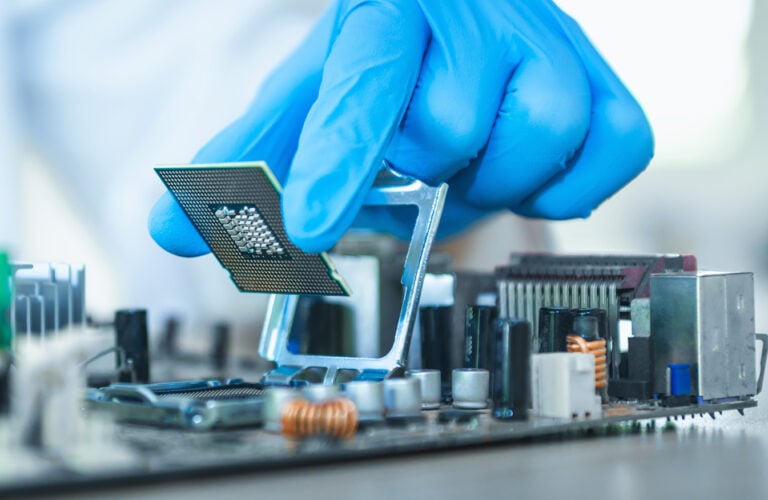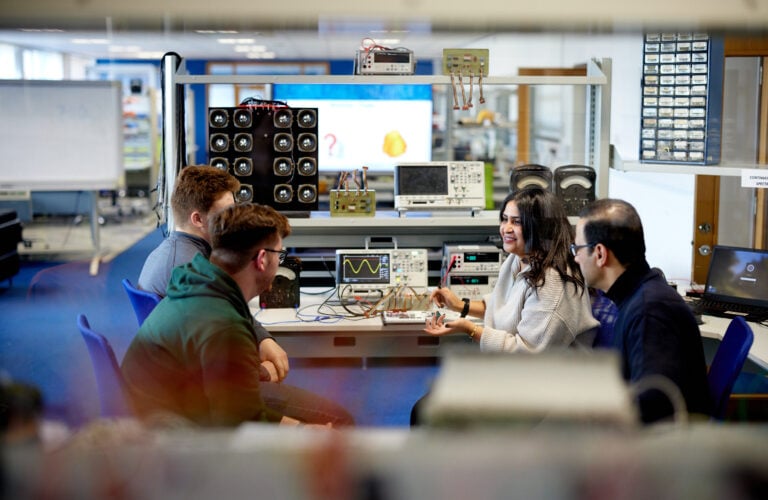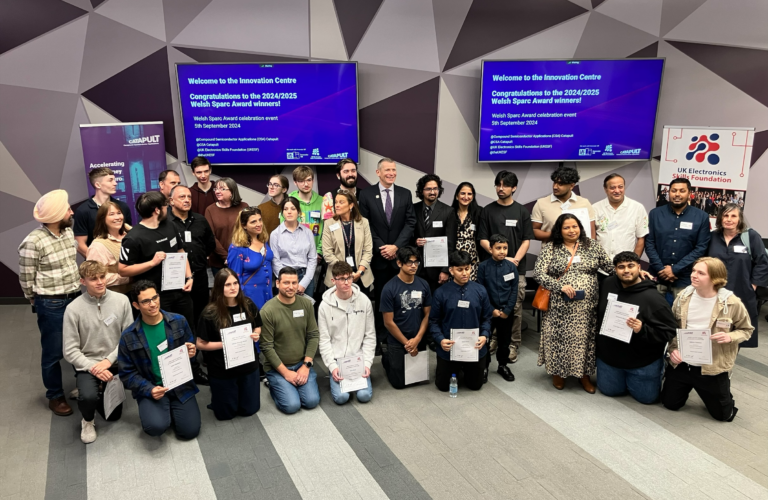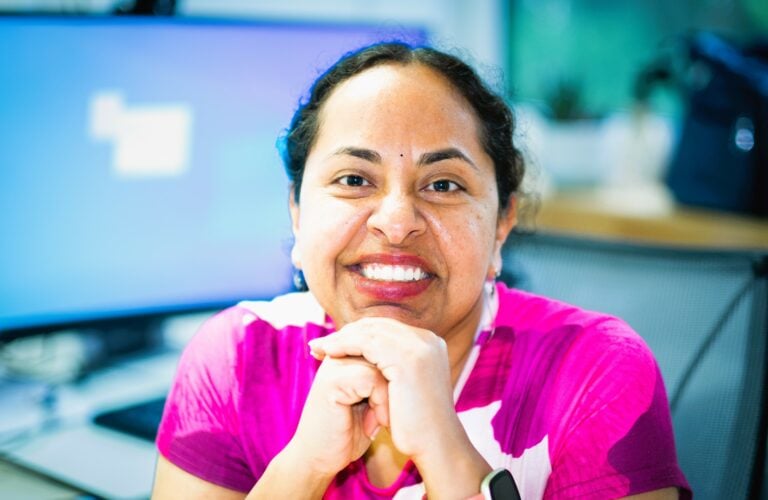“Many of the students came and thanked me and said how much they enjoyed it”
Eddie Ball, Reader in RF Engineering, University of Sheffield
The 2019 UKESF-Headstart Summer School was hosted by the University of Sheffield, from 16th to 20th June. Almost 70 final-year A-level students attended the residential course, which provided an opportunity to learn more about studying Electronics at degree level and take part in a variety of lectures, labs, visits and networking events, as well as a first taste of university life.
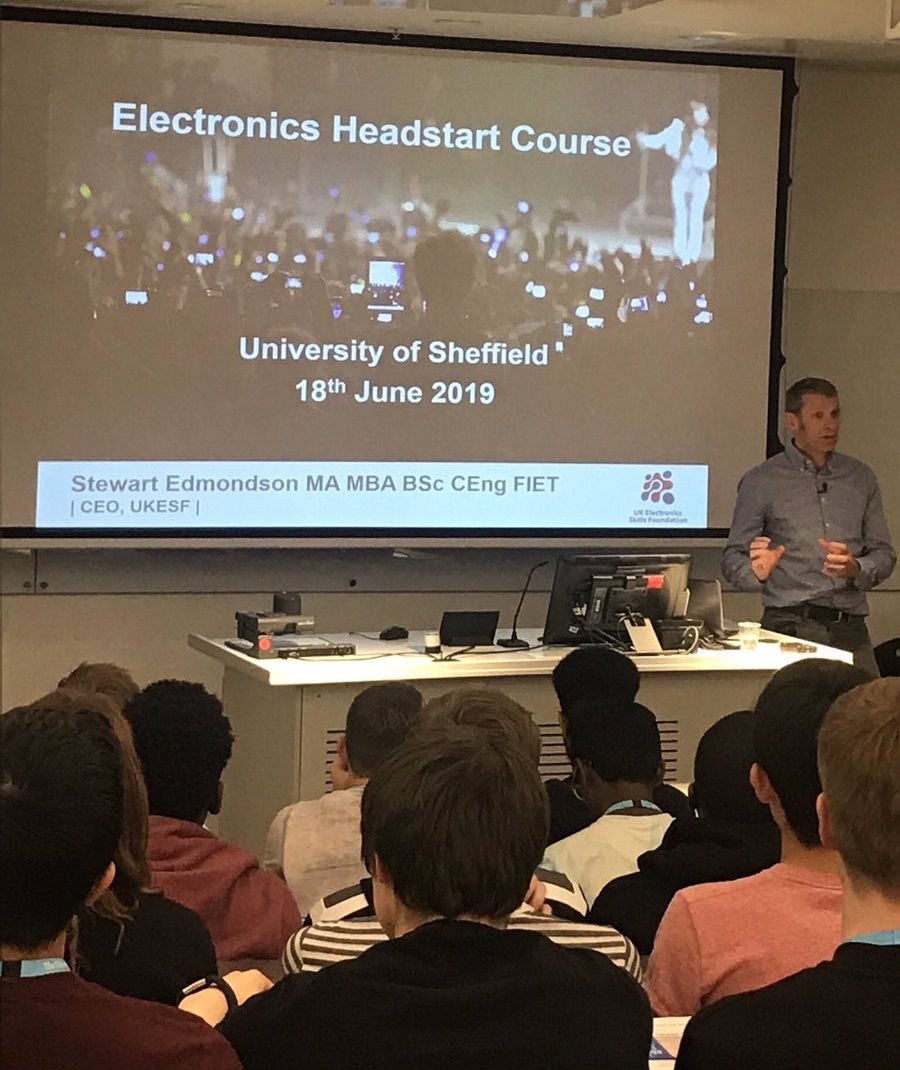
Stew Edmondson with the students
The networking with companies session was particularly successful, with an excellent level of interest and engagement from the students. Thank you to the UKESF Company Partners who came along to support the event: Arm, AVL, AWE, Qualcomm, Sky, UltraSoC (now acquired by Siemens) and Waters. Many thanks as well to UKESF Scholars Peter and Andrey, who gave talks to the attendees.
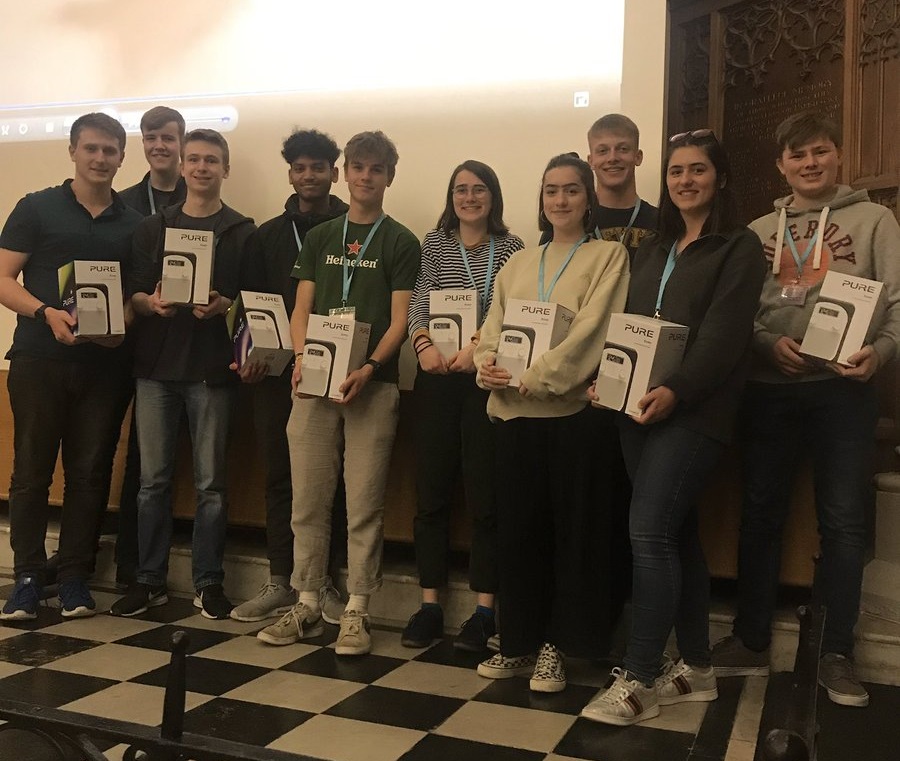
Winners of the Robot Challenge with their prizes – digital radios kindly donated by PURE
“I think it has been a significant success – the project went really well, with most of the students getting the sensor PCBs and robot working sufficiently for the competition … Afterwards, many of the students came and thanked me and said how much they enjoyed it, which is credit to us all … Thank you for the opportunity to host such an important event.”
Eddie Ball, Reader in RF Engineering, University of Sheffield
“I was ever so pleased with the Electronics Summer School and would like to say a massive thank you to all the UKESF colleagues. The UKESF provided the catalyst to deliver the Electronics Summer School, which has been an aspiration of mine for a number of years as it is a fantastic discipline that is still unrecognised by the younger generation. I’m keen for the department to continue delivering some form of Electronics & Electrical Engineering summer school next year and hopefully beyond!”
Gemma Greenup, Recruitment Manager, University of Sheffield
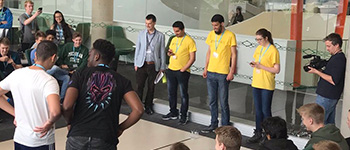
The Robot Challenge in action
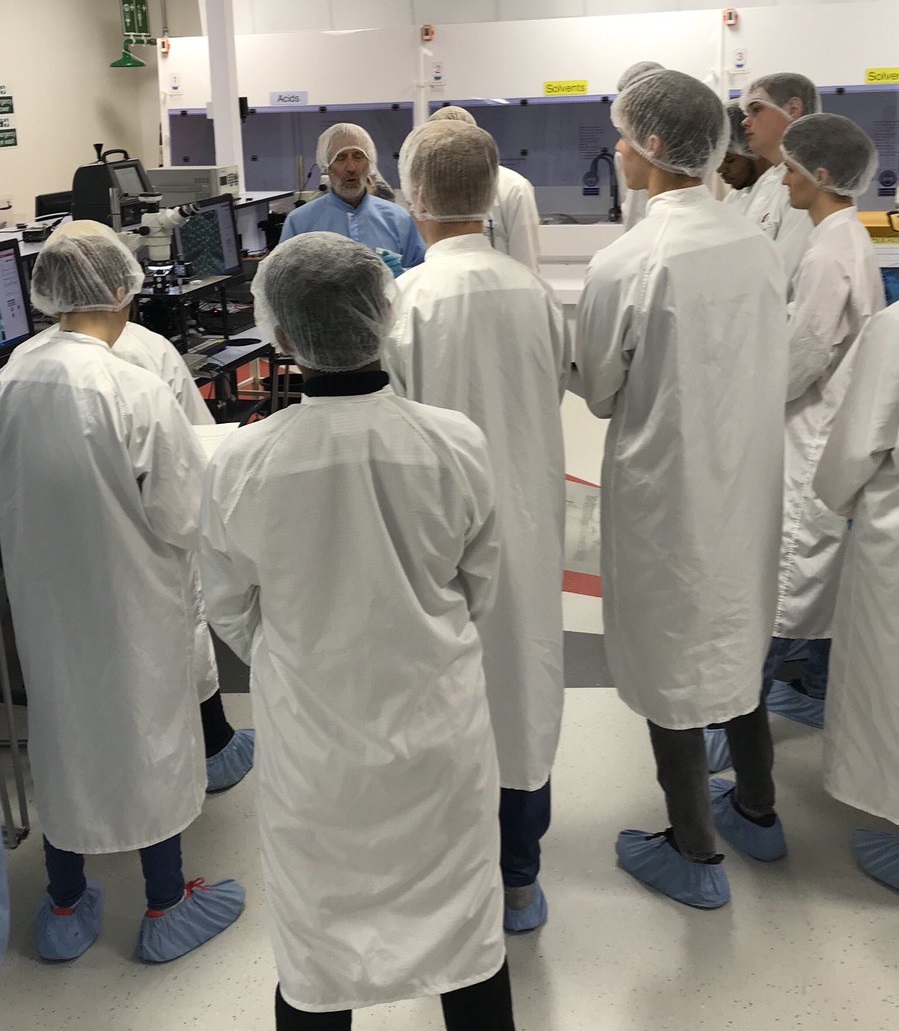
Dr Gavin Williams demonstrating how to make a light-emitting diode in the Clean Room
“I really enjoyed the course, there was a good mix of lectures and practical workshops. The social activities were also really enjoyable and the ambassadors were all friendly.”
“I enjoyed the Clean Room looking at the science behind LED lights, I enjoyed soldering and programming a robot, making friends, I may have found a new passion.”
“Some of the talks with people who have done engineering degrees and are now working in engineering job roles explaining what they do and what paths they took, this really sparked some more of my ambition and now I aspire to be like some of them.”
“The course made me realise that there are people similar to me in STEM, I made some really good friends and it has definitely confirmed for me that this is what I want to do.”
